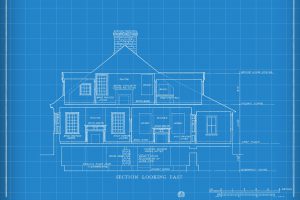Recently, the Tel Aviv Municipality has shown much greater flexibility regarding Tama 38 and is more accommodating toward developers. While this is a positive development, the main issue remains that the vast majority of initiatives are concentrated in the city’s older and more expensive central areas, whereas interest in the southern and eastern neighborhoods is significantly lower.
**Tama 38, “The White City,” and the Real Estate Market in Tel Aviv**
Both developers and residents have long known that Tel Aviv presents a complex and challenging environment for urban renewal projects under Tama 38. For many years, there seemed to be a hostile attitude from the municipal engineering department toward such initiatives. Additionally, the strict urban zoning plans in central Tel Aviv, along with the preservation plan for the “White City” areas—designated as a UNESCO World Heritage Site—have further complicated matters.
Despite these obstacles, developers continued to pursue planning and development in these areas due to their high economic potential. Successfully navigating the complex procedures resulting from the updated regulations offers developers the opportunity to construct and sell highly sought-after and unique apartments, promising higher profits. Moreover, in Tel Aviv’s old north and central neighborhoods, there are virtually no available plots for new construction, making Tama 38 the only viable path for adding new housing units.
**Processes of Change and Momentum in Urban Development**
Alongside this reality, a gradual yet notable shift has occurred over the past two years. Data shows a significant increase in the number of Tama 38 project approvals issued by the municipality, some for demolition and reconstruction, and others for strengthening and expanding existing buildings. Additionally, a new municipal licensing institute was established in Tel Aviv to provide centralized services from all relevant departments, streamlining the permit process. The municipal company Ezrah U’Bitzaron also launched a dedicated department that allows residents of shared buildings to connect with relevant developers at no cost.
It’s important to note, however, that while preliminary approval does not require unanimous consent from all residents, the actual permit does. As a result, many projects that receive initial approval do not proceed due to resident disagreements. Furthermore, the bureaucratic procedures required to obtain a construction permit often delay project implementation by at least a year. Alongside these delays, some positive developments have occurred, such as the municipality’s softened stance toward Tama 38 developers. For example, in May 2012, the addition of two and a half stories to approved buildings was authorized, increasing the economic feasibility of expansion projects that had not yet been realized. Moreover, the approval of the District Plans eliminated prior uncertainty regarding future neighborhood regulations and provided a sense of security and clarity, boosting implementation activity.
**Citizens, Developers, and New Apartment Prices in Various Districts**
Although the district plans are quite complex—setting out distinct building rights for each part of the city in a highly detailed manner—residents now have more power. Today, any citizen can find out exactly what building rights they are entitled to by law, eliminating dependence on questionable promises from various stakeholders and signature collectors. Even though Districts 3 and 5, which include central Tel Aviv, are heavily restricted in terms of Tama 38 development, they remain highly popular and continue to attract most of the development activity.
In contrast, in the eastern and southern parts of the city—where all Tama 38 rights are available, including the ability to add two and a half stories to existing buildings—the rate of advanced plans remains low. The reason is simple: the high and lucrative prices of new apartments in central Tel Aviv make it more economically advantageous to build a story and a half in a prime location than two and a half stories in areas that are in dire need of renewal. This shortcoming of Tama 38 becomes even more apparent from a national perspective, as the program’s relevance is driven by land values in central regions.
**Other Areas with Urban Renewal Potential in Tel Aviv**
Relaxing Tama 38 conditions in Tel Aviv’s less desirable areas could have expanded the scope of construction there as well. Nevertheless, insiders report that the municipality is planning broader urban renewal through large-scale clearance-reconstruction projects, including in neighborhoods such as Yad Eliyahu and Neve Sharett. Another area gaining potential for new housing additions is the Yarkon River area neighborhoods, where both developers and residents are showing increasing interest in large-scale construction activity.
 What are the buyers looking for in the next property you’re going to sell?
What are the buyers looking for in the next property you’re going to sell?
 How the Dollar Value Impacts Real Estate
How the Dollar Value Impacts Real Estate
 Capital Gains Tax Discounts and Purchase Tax Reductions in 2025 (Also for Investors)
Capital Gains Tax Discounts and Purchase Tax Reductions in 2025 (Also for Investors)
 Rules and Considerations When Examining Boundaries and Plot Demarcation
Rules and Considerations When Examining Boundaries and Plot Demarcation
 Should You Invest in a TAMA 38 Investment Fund?
Should You Invest in a TAMA 38 Investment Fund?
 Contractor from Birth – The Complete Guide to Building a Private House
Contractor from Birth – The Complete Guide to Building a Private House